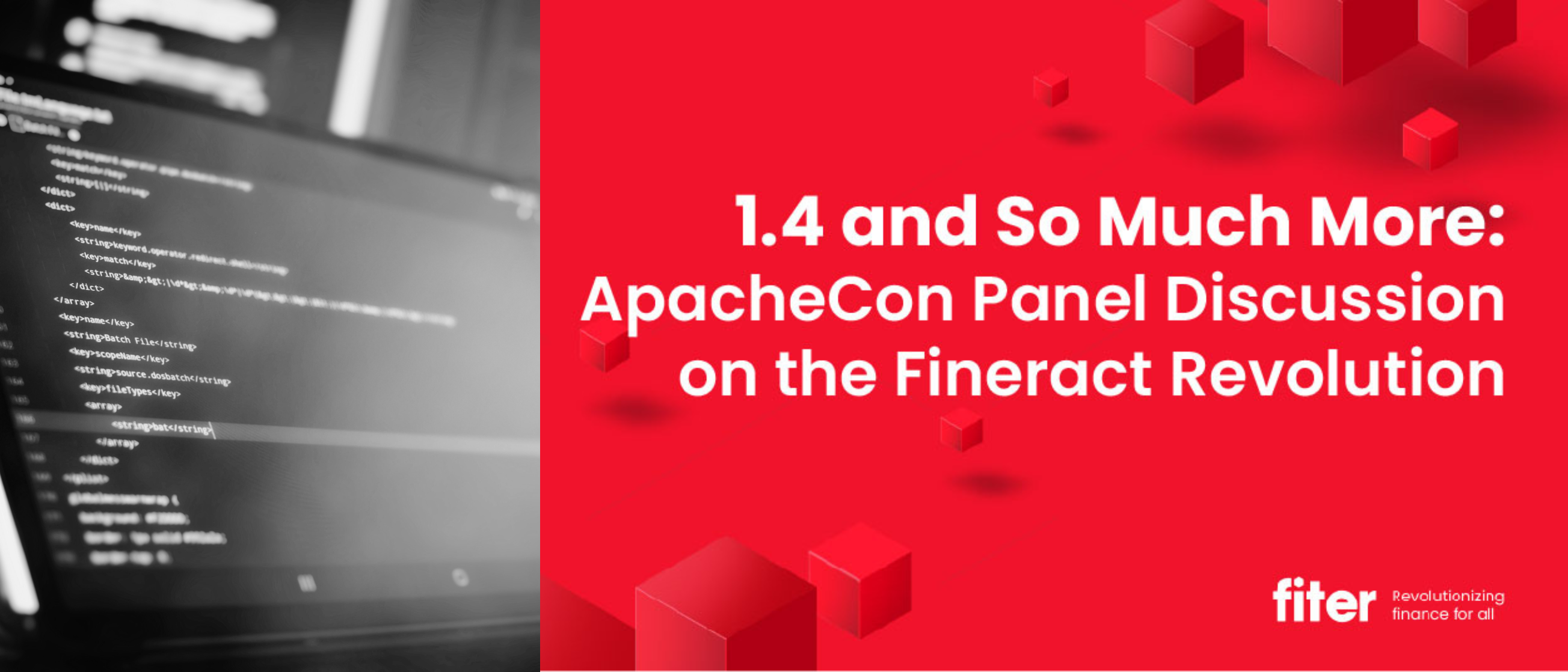Marc Andreessen is famous for saying software is eating the world. It would be appropriate to add that now open-source software is eating software. But what makes open-source software so instrumental?
Javier Borkenztain, Fiter Co-founder and CEO, a member of the Apache Foundation, and an Apache Fineract PMC member, was a guest speaker at the FINOS and Linux Foundation conference. Here are his thoughts on loans, accounts, and transactions based on open-source software and why open-source software and specifically Apache Fineract is eating FinTech:
Standardization
Standardization is the reason OSS became the most important software in the industry. Open source is all about standardization. Contrary to other industries where a committee gives the stamp of approval and determines implementation priorities, OSS is quite cost-effective to test and identify what works and what doesn’t. Open-source projects have therefore become the de facto standard for some industries; for example, projects based on Cassandra, Linux, Hadoop, and other projects that have become the actual standard based on the large community of people using the software. In this way the software industry can easily determine what works best and upon which platform to build.
Community
The second important thing about open source is Community. Community always outperforms individuals and singular companies. A community is stronger, more resilient, and lasts longer than individual entities.
When using open-source software, individuals are also joining a community of volunteers around the world who support and create that software. The user is therefore not just enjoying free, open-source software, but actually using a product that was created by and for a community of volunteers of which the user is now a member.
Bye Bye, Vendor Lock-In
The third characteristic of OSS is that there is no vendor lock in. This means that the user enjoys the multiple options stemming from the community behind the product. Users are not bound by licensing and proprietary software.
The community has different tools, resources, people, companies, that support the user and offer various services without the user being tied down to just one vendor or distribution network.
This freedom and flexibility create a competitive advantage against businesses that are bound to one core system.
From a safe to a switch
Traditional financial institutions have served as a safe or vault of client assets. We are now witnessing a transition from the safe model to a switch model where financial institutions enable their users, the customers, to move their assets seamlessly around the world. The Rest API architecture supports the transformation from a safe to a switch.
How are FinTechs using Fineract?
Fineract is used in more than 2,000 financial institutions and FinTechs across 60 countries. FinTechs love many features offered by Fineract. Fineract’s architecture is based on Rest APIs which makes it easy to configure new products without the need for programming and also to connect with everything else in the world. The fact that add-on features are now a matter of configuration rather than actual development and that Fineract is cloud-ready and cloud agnostic makes Fineract very attractive to FinTechs and financial institutions. Fineract can be run on any cloud in the world, whether private or public.
Fineract supports a high volume of transactions. The current Fineract version 1.8 has several improvements that offer financial institutions a high level of transaction per second, at around 300 TPS.
Different FinTechs use Fineract in different ways from Neo banks and digital banks to payment companies, banking-as-a-service companies, investment banks, lenders, decentralized finance companies, e-wallets and more. There are also a number of new actors that are building interesting new features and using Fineract to power these developments.
Fineract supports several financial use cases, asset products, liability products, transactional products, KYC, and more. This opens up endless development opportunities based on Fineract out of the box at the usage level, product level, and the service level.

Key features of Fineract for FinTechs
- Easy, out of the box development: wallets and accounts.
- Mapping liabilities: Fineract allows you to identify accounts that generate interest, accounts that don’t generate interest, checking accounts, transactional accounts, wallet accounts, and of course multicurrency accounts, and more.
- Powerful loan management system: The loan management system is one of the most powerful features in Fineract, offering a huge granularity of products and services, ideas, charges, interest, enabling users to configure on top of Fineract without the need for programming. All loan types being used by online lenders, Neo Banks, and DeFi, decentralized finance, are supported by Fineract throughout their entire loan lifecycle.
- KYC and Customer Dashboard: Whether your customer has a loan, an account, multiple loans, multiple accounts, or all of the above, you can see everything on one single screen. This 360-degree, holistic view enables businesses to understand their customers and their needs with a single glance, making it an incredibly powerful tool.
- Reporting and Compliance: Reporting and compliance plays a critical role for any FinTech or regulated financial institution. Fineract offers a huge number of reports out of the box as well as the development of more specific reports based on Fineract, making this feature very powerful and typical of the system.
- Account savings wallets functionality: typically used by Neo banks that are digital banks. These banks do not have physical branches, existing in cell phones and providing customer service through their app. FinTechs such as E-wallets, crypto exchanges, and investment banks, all use account savings, and wallets.
- Flexibility: The openness that allows organizations to use the system and develop on top of it is powerful and very appealing to FinTechs using Fineract.
- Leveling the playing field: FinTechs are realizing that through the implementation of Fineract, they have attained the same level of product and system capabilities as any big bank in the world. FinTechs are able to develop new solutions, new services on top of Fineract very quickly and attain a competitive advantage.
Open-source software is revolutionizing the financial industry, allowing FinTechs and financial institutions to up their game and level the playing field quickly and effectively through new products, services, and capabilities. Reach out to us at https://fiter.io to find out how Fiter can help your business get to the next level.











